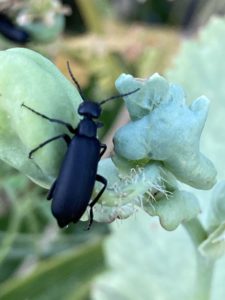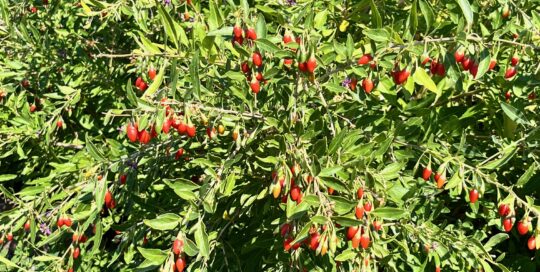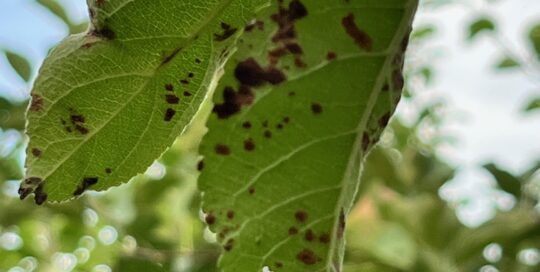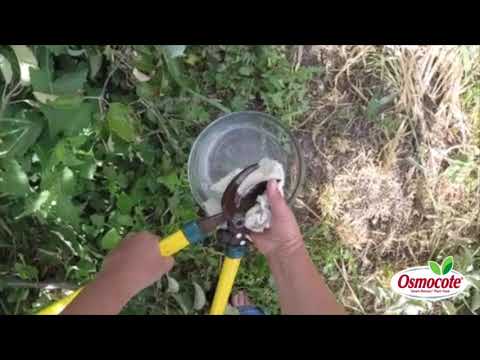The Plague of Grasshoppers and Blister Beetles
Views: 2670

I know it’s cliche at this point, but it’s been an interesting year. As if a pandemic wasn’t enough, the plague of insects is upon us. Grasshoppers are you eating pretty much everything, and now blister beetles are showing up on my spinach varieties. There is never a dull moment.
Plague of grasshoppers
A plague of grasshoppers is nothing new in this part of the world. But this year the grass moves when we walk through it. For many years we’ve don’t with them to the point where I would routinely apply Semaspore or NOLO (Nosema locustae) bait, which is a protozoan that affects their digestive system. When ingested by young grasshoppers you can make a dent in the population. Unfortunately, I didn’t anticipate this level of grasshopper pressure, and it is too late. The best I can do now is flick them off and cover the plants.
Of course, this is a season I wish we still had our chickens. Friends who have them and allow them to free-range in their yard, keeping them out of the garden, have far fewer grasshoppers. And this is someone who is less than 1/4 mile from our house. It is another reason why chickens, or ducks or guinea fowl for that matter, are very beneficial in the pest control realm. Allow them to roam close to the garden without entering it because you don’t want chicken poop on your peppers. Chicken tunnels, which are just like what they sound — caged pathways that run the perimeter of the garden — are an excellent way to keep them close to the garden without going near the plants.
Blister beetle buddies
Besides a plague of grasshoppers, we have blister beetles for the first time in nearly a dozen years. At first glance, these 3/4 inch long black beetles remind me of a lightning bug, but they are more slender and solid in color. And they’re not nearly as delightful producing cantharidin, a highly irritating compound that can blister your skin. It also can also mess up the gastrointestinal tract of livestock and horses, sometimes leading to death.
There’s an interesting correlation between blister beetles and grasshoppers from the Colorado State Extension agency. The blister beetles’ youngest larvae seek out grasshopper egg pods in the soil to feed upon, so when grasshoppers are prolific so are the blister beetles. That is definitely holding true this year.
The danger of blister beetles
Blister beetles are enormous problems in hay crops because if there are enough beetles it can prove detrimental to the animals consuming it. They’re equally problematic in the garden because if you handle them the chemical compound can irritate your own skin. The best way I’ve learned to deal with them is to haul out the Shop-Vac and literally suck them off the plants.
Protect your plants from leaf-eating beetles
If your cord isn’t long enough to reach your garden, you do have other options. Diatomaceous earth can be effective if it’s sprinkled frequently in between waterings. Or don a pair of gloves and flip them into bowls of soapy water. Just be careful not to handle them directly with your fingers. Another option is using Spinosad, which is a natural compound derived from a bacterium found in the soil. This affects the nervous system and will usually kill them within a few days.
I have to admit that I’m a little concerned to see with the rest of the years going to bring after our plague of grasshoppers. It is definitely one for the books already exclamation point but in the meantime, I’m going to do the best to salvage as much of the garden I can and hopefully implement a few measures that will reduce the numbers of both grasshoppers and blister beetles next year just in case the conditions are right once again.
Meet Amy Grisak
Amy is a freelance author and photographer in Great Falls, MT who specializes in gardening, foods, and sustainable agriculture. She provides information on every kind…
Amy's Recent Posts

Goji Berries are Delicious, but a Little Invasive








